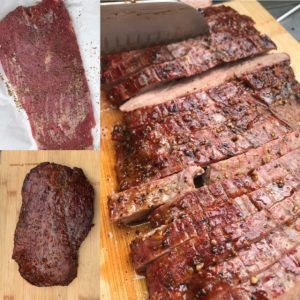How to Cook the Perfect Steak
Follow these steps to the best steak of your life.
S - Start with a hot grill. Sear beef to develop flavor.
T - Turn steaks gently with tongs; never pierce with a fork.
E - Ensure juiciness by flipping steaks once, if possible.
A - Assess doneness with an instant-read thermometer.
K - Keep food safety in mind. Wash anything that touches raw meat.
S - Set steaks aside to rest a few minutes before serving.
Bonus Tip:
Season steaks generously with salt and pepper before cooking - that's all you need.
More Cooking TIps
The Best Cuts
Knowing your cuts of meat can make all the difference:
Strip Steak:
This classic steakhouse cut from the loin is lean,
tender and full-flavored.
Filet Mignon:
(or Tenderloin Steak) – This lean cut is famous for
its tender texture and mild flavor.
Porterhouse or T-Bone:
The best of both worlds: strip steak on one side
of the T-shaped bone, filet mignon on the other.
Ribeye Steak:
Marbled, tender and rich, this delicious steak
offers robust flavor and juiciness.
Degrees of Doneness
To check doneness, use an instant-read thermometer inserted through the side of the cut, with the tip in the center, not touching any bone or fat. Remove steaks and burgers from the heat at 5°F lower than your desired doneness, as the temperature will continue to rise while resting.
The USDA recommends steaks be cooked to 145°F and then rested for at least 3 minutes. To ensure food safety, ground beef should be cooked to a minimum 160°F.
Rare: (125°F, 52°C) - Cool red center
Medium Rare: (135°F, 57°C) - Warm red center
Medium: (145°F, 63°C) - Warm pink center
Medium Well: (150°F, 66°C) - Slightly pink center
Well: (160°F, 71°C) - Little or no pink



